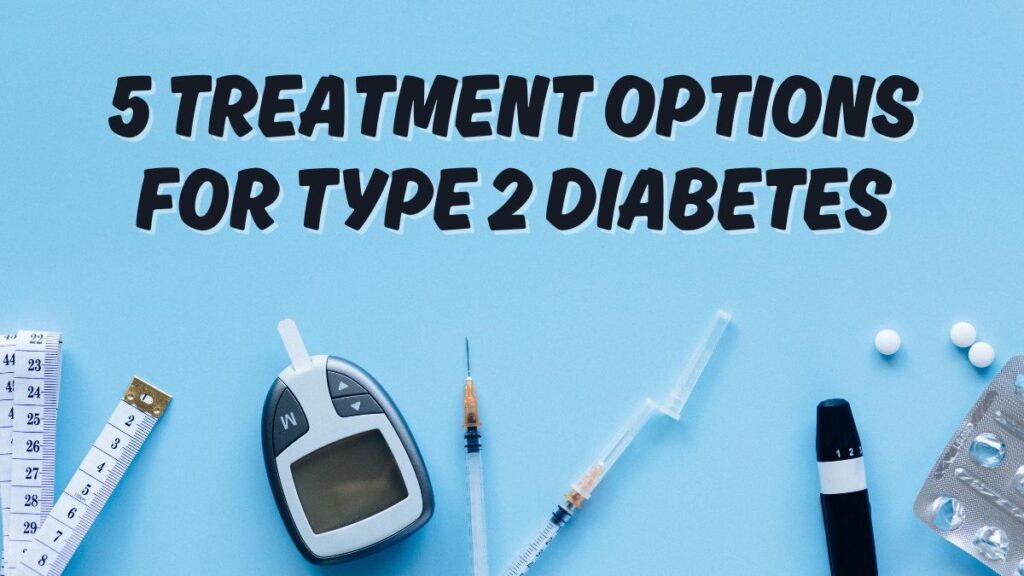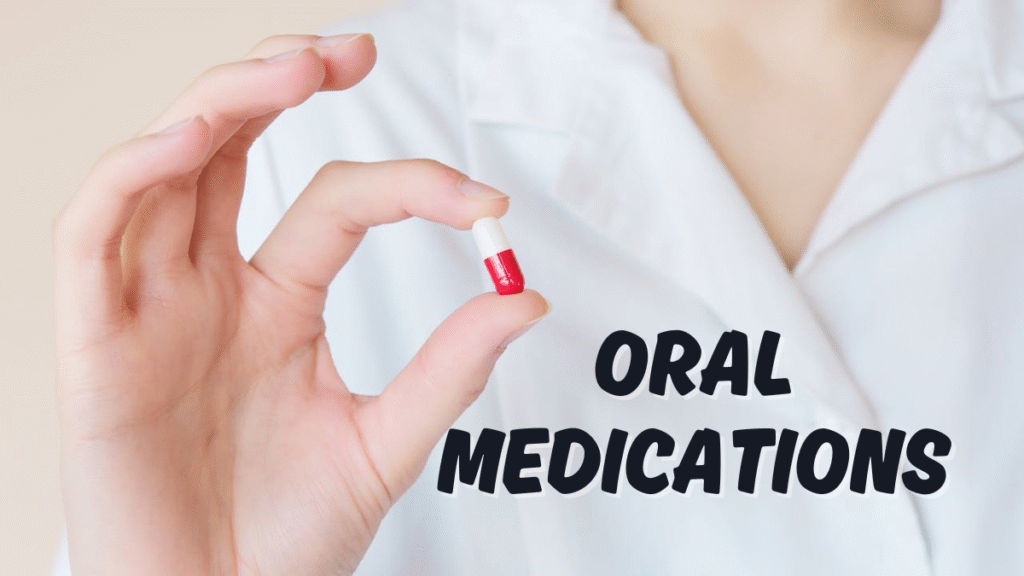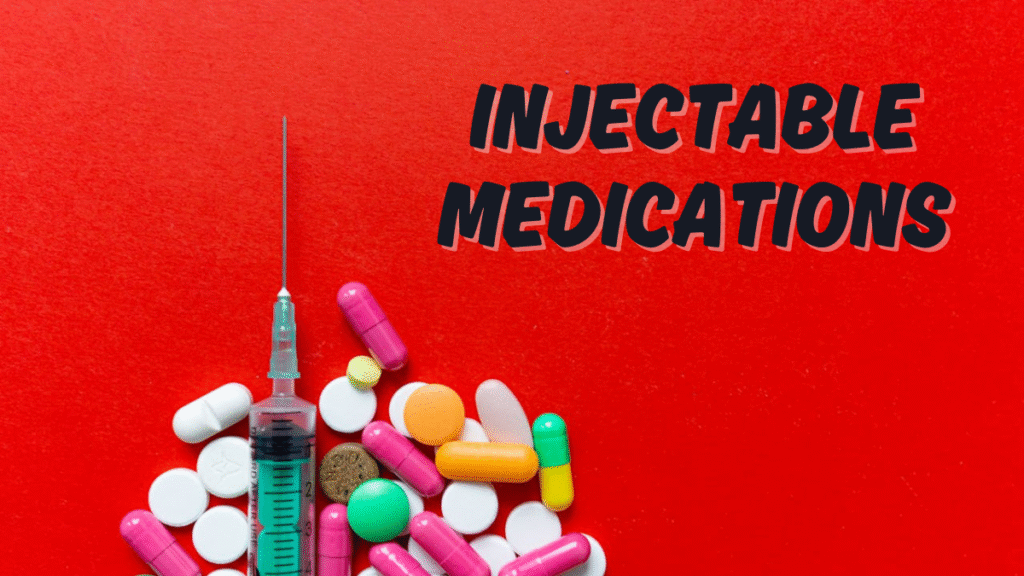Living with type 2 diabetes can feel scary at first. You might wonder, “Will I have to take medicine forever?” or “Can I still eat the foods I love?”
The good news is that there are many ways to treat type 2 diabetes and you have more power than you think!
The truth is, type 2 diabetes is a common condition and the even better news? It can be managed very well with the right plan.
Whether you’re newly diagnosed or just looking for better ways to handle your blood sugar, this guide is here to help. We’ll break down the most common treatment options for type 2 diabetes in a way that’s simple, clear, and even a little fun.
From healthy habits to medications and beyond, you’ll learn how each choice can help you feel your best and take back control of your health. Let’s walk through the different treatment options for type 2 diabetes in a fun, easy way.
Think of this as your personal guide to feeling better, staying healthy, and enjoying life with confidence.
Table of Contents
First, What Is Type 2 Diabetes?
Your body uses a sugar called glucose for energy. But it needs a helper called insulin to move that sugar from your blood into your cells. In type 2 diabetes, your body doesn’t use insulin well. This means sugar stays in your blood instead of going where it’s needed. Too much sugar in your blood for a long time can harm your body.
The goal of treatment is to bring that sugar (called blood sugar) down to a healthy level.
To know in depth about Type 2 Diabetes, read the article:
Now, let’s move forward and discuss the 5 major treatment options for type 2 diabetes.
The 5 Main Treatment Options for Type 2 Diabetes
Now that you understand what type 2 diabetes is, let’s talk about something really important “how to treat it”.

The good news is that there’s no one-size-fits-all approach. In fact, there are several effective ways to manage your blood sugar, and you and your doctor can choose the plan that fits your life best.
Think of these treatment options like tools in a toolbox. Some people only need one, while others might use a mix. What matters most is finding what works for you so you can feel better, stay healthy, and enjoy the things you love.
You don’t have to make big changes all at once. Whether you start with a daily walk, try a new recipe, or take a medication your doctor recommends, every step forward makes a difference.
Let’s explore the five main treatment options that can help you take control of type 2 diabetes one choice at a time:
1. Lifestyle Changes – Your Superpower!
One of the best ways to the treatment options for type 2 diabetes, doesn’t come from a pill—it comes from the choices you make every day. Your food, activity, stress, and sleep habits all play a big role in keeping your blood sugar in check.
The good news? Even small changes can lead to big improvements.
Let’s look at the key lifestyle changes that can help you feel better and take control of your diabetes.

Healthy Eating
Eat more fruits, veggies, whole grains, and lean proteins. Cut back on sugar and processed foods. Try to fill half your plate with vegetables at each meal.
Tip: Swap soda for water and white bread for whole grain.
Regular Activity
Aim for 30 minutes of movement most days—walking, dancing, biking, or even cleaning counts! Exercise helps lower blood sugar and boosts energy.
Tip: Start with 10 minutes a day and build up.
Weight Loss (If Needed)
Losing just 5–10% of your weight can improve blood sugar. No crash diets—just steady progress through healthy eating and exercise.
Tip: Focus on one small change at a time.
Stress Management
Too much stress can raise your blood sugar. Try deep breathing, stretching, or talking to someone you trust to help you stay calm.
Tip: Take a few minutes a day to relax your mind.
Better Sleep
Aim for 7–9 hours of sleep each night. Poor sleep can affect blood sugar and hunger.
Tip: Keep a regular bedtime and avoid screens before bed.
Small Steps, Big Results
You don’t need to do everything at once. Pick one small habit to start today, and build from there. Your everyday choices truly are your superpower in managing type 2 diabetes!
Make changes slowly. Try one new thing a week. Swap soda for water or go for a 10-minute walk after dinner.
2. Oral Medications (Pills)
If healthy habits aren’t enough to control your blood sugar, the treatment options for type 2 diabetes is that, your doctor may recommend oral medications pills that help your body manage sugar better. These medicines work in different ways, and some people may take one or a combination.

Let’s look at the most common types:
Metformin
The most common starter pill. It lowers the amount of sugar your liver makes and helps your body use insulin better.
Tip: Often taken with food to avoid stomach upset.
Sulfonylureas
These help your pancreas make more insulin. They’re affordable but may cause low blood sugar in some people.
Example: Glipizide, Glyburide.
SGLT2 Inhibitors
Help your kidneys remove extra sugar through urine. They may also help with weight loss and heart health.
Example: Jardiance, Farxiga.
DPP-4 Inhibitors
Help your body make more insulin after meals and lower sugar production. They’re easy to take and have fewer side effects.
Example: Januvia, Tradjenta.
What You Should Know?
- Most diabetes pills are taken once or twice a day.
- Some people may need more than one type.
- Always follow your doctor’s instructions and let them know if you notice any side effects.
Reminder: Pills are just one part of your treatment. Healthy habits still matter!
3. Supplements – Helpful or Hype?
Some people with type 2 diabetes are curious about this treatment options for type 2 diabetes, i.e., using supplements to help manage their blood sugar.

While supplements can be helpful in certain cases, they should never replace healthy eating, exercise, or prescribed medications. Think of them as a possible “extra boost” not a main treatment.
A few supplements have shown some promise in studies. For example, cinnamon may help lower blood sugar slightly in some people, especially when taken in larger amounts.
Another popular supplement is berberine, a natural plant compound that might work similarly to metformin by helping the body use insulin more effectively. These supplements aren’t magic fixes, but they may provide added support when used wisely.
Other supplements like alpha-lipoic acid (ALA) are often used for nerve pain (a common problem in diabetes) and may also support better blood sugar levels.
Nutrients like magnesium and vitamin D are also important, especially if you’re low in them because low levels may make it harder to control blood sugar. A simple blood test can help your doctor decide if you need these.
It’s very important to remember that not all supplements are safe for everyone. Some can interact with medications or cause side effects.
Before trying any supplement, always talk to your doctor or a pharmacist. Just because something is “natural” doesn’t mean it’s harmless. Your healthcare team can help you decide what’s safe and what’s just hype.
But, if you are actually looking for Best Blood Sugar Management supplements, then check out the Shop by Smart Sugar Control.
4. Injectable Medications (Not Just Insulin!)
When people think of diabetes injections, they usually think of insulin but there are actually other treatment options for type 2 diabetes used.

These medicines help lower blood sugar in different ways and are often used when pills and lifestyle changes aren’t enough.
One of the most common non-insulin injectables is a group called GLP-1 receptor agonists. These medications help your body make more insulin when you eat, slow down digestion, and reduce appetite. Many people lose weight while using them, which can also help control blood sugar.
Some popular options include Ozempic, Trulicity, and Mounjaro, and most are taken just once a week.
Of course, insulin is still an important treatment for some people with type 2 diabetes, especially if their blood sugar stays high despite other treatments.
There are different types of insulin some work quickly, while others last all day. Your doctor will help decide which type, if any, is right for you and how often you need it.
Injectable medications may sound scary at first, but the needles are usually very small and easy to use at home. Many come in simple “pen” devices.
If your doctor recommends an injectable, they’ll show you how to use it safely. And remember: injections aren’t a sign of failure they’re just another tool to help you stay healthy and in control.
Pro Tip: New insulin pens are super easy to use just a quick click and you’re done!
5. Bariatric (Weight Loss) Surgery
For some people with type 2 diabetes, especially those who are significantly overweight, bariatric surgery also known as weight loss surgery can be one of the powerful treatment options for type 2 diabetes.
It’s not just about losing weight.

This surgery can actually improve or even reverse type 2 diabetes in many cases.
There are different types of bariatric surgery, but they all work by changing how your stomach and digestive system handle food.
Some surgeries make the stomach smaller, so you eat less. Others change how food is absorbed in the body. The result? Lower blood sugar, less insulin resistance, and often, fewer or no diabetes medications.
Many people see big changes in their blood sugar levels within days or weeks after surgery even before much weight is lost. In fact, studies show that some people who have bariatric surgery no longer meet the criteria for diabetes afterward.
This is why doctors sometimes call it “metabolic surgery” when used to treat type 2 diabetes.
However, surgery isn’t for everyone. It’s usually recommended for people with a BMI over 35 who haven’t been able to manage diabetes through lifestyle changes and medications.
It also requires a lifelong commitment to healthy eating, regular follow-ups, and possibly taking vitamins or supplements. If you’re interested, your doctor can help you decide if this could be a safe and effective option for you.
Working with Your Diabetes Care Team
You’re not in this alone! Here are some people who might help you on your journey:
- Primary Care Doctor – Your main health guide
- Endocrinologist – A diabetes expert
- Dietitian or Nutritionist – Helps plan meals you enjoy
- Diabetes Educator – Teaches you how to manage diabetes step by step
Teamwork makes the dream work! The more you learn, the easier it gets.
Reversing Type 2 Diabetes
“Can I Ever Be Cured?”
Here’s the honest answer: There are actually a lot of treatment options for type 2 diabetes, but some people can also get type 2 diabetes into remission, meaning their blood sugar is normal without meds.
How? Usually through:
- Major weight loss
- Eating healthy
- Staying active
Even if remission doesn’t happen, you can still live a long, healthy, and happy life by implementing the treatment options for type 2 diabetes mentioned above.
Takeaway: You Have Options and Hope!
Let’s review the main treatment options for type 2 diabetes:
| Treatment Option | What It Does? |
| Lifestyle Changes | Improves blood sugar naturally |
| Oral Medications | Helps body use insulin or lower sugar |
| Supplements | Provides added support for blood sugar |
| Injectable Medications | Regulates appetite, sugar, or adds insulin |
| Surgery | May reverse diabetes in some cases |
You are in control. Every small step you take eating a healthy meal, walking around the block, taking your meds adds up to a healthier you.
Remember: Type 2 diabetes is something you manage, not something that manages you.
Ready to Take Your First Step?
Start by talking to your doctor about which treatment option is right for you. Ask questions. Learn.
Try one healthy change this week and see how good it feels to take charge!
Also check out the offers on blood sugar supplements by visit the Shop by Smart Sugar Control.
Conclusion: You Have the Power to Take Control
Living with type 2 diabetes can feel overwhelming at first but the truth is, you have more control than you think.
With the right combination of lifestyle changes, medications, and support, managing your blood sugar and protecting your long-term health is completely possible.
Whether you start by eating healthier, moving more, trying a new medication, or even exploring surgery, every step you take brings you closer to feeling better and living a full, active life.
The most important thing is to work with your healthcare team and create a plan that works for your body and your lifestyle.
Remember, there’s no “one-size-fits-all” solution and that’s okay. Diabetes treatment is personal.
Be patient with yourself, stay informed, and take it one day at a time. Small, consistent choices can lead to big, life-changing results.
You’re not alone on this journey and with the right tools and support, you can thrive with type 2 diabetes with the treatment options for type 2 diabetes mentioned above.
References
The information in this article is based on trusted medical sources and expert-reviewed guidelines. Below are the key references used to ensure accuracy and provide readers with helpful, up-to-date knowledge about type 2 diabetes treatment options. If you’d like to learn more, feel free to explore the links below.
Centers for Disease Control and Prevention (CDC)
“Type 2 Diabetes”
https://www.cdc.gov/diabetes/basics/type2.html
American Diabetes Association (ADA)
“Standards of Care in Diabetes – 2024”
https://diabetes.org/diabetes/type-2
National Institute of Diabetes and Digestive and Kidney Diseases (NIDDK)
“Treatment of Type 2 Diabetes”
https://www.niddk.nih.gov/health-information/diabetes/overview/managing-diabetes/type-2-diabetes
Mayo Clinic
“Type 2 Diabetes – Diagnosis and Treatment”
https://www.mayoclinic.org/diseases-conditions/type-2-diabetes/diagnosis-treatment/drc-20351199
Johns Hopkins Medicine
“Weight-Loss Surgery for Type 2 Diabetes”
https://www.hopkinsmedicine.org/health/treatment-tests-and-therapies/weight-loss-surgery-for-type-2-diabetes
Cleveland Clinic
“Diabetes Medications: Types, Uses and Effects”
https://my.clevelandclinic.org/health/treatments/22163-diabetes-medications
Harvard Health Publishing
“Supplements and Diabetes: Do They Help?”
https://www.health.harvard.edu/staying-healthy/supplements-and-diabetes-do-they-help
WebMD
“Type 2 Diabetes: Oral and Injectable Medications”
https://www.webmd.com/diabetes/guide/diabetes-medications
